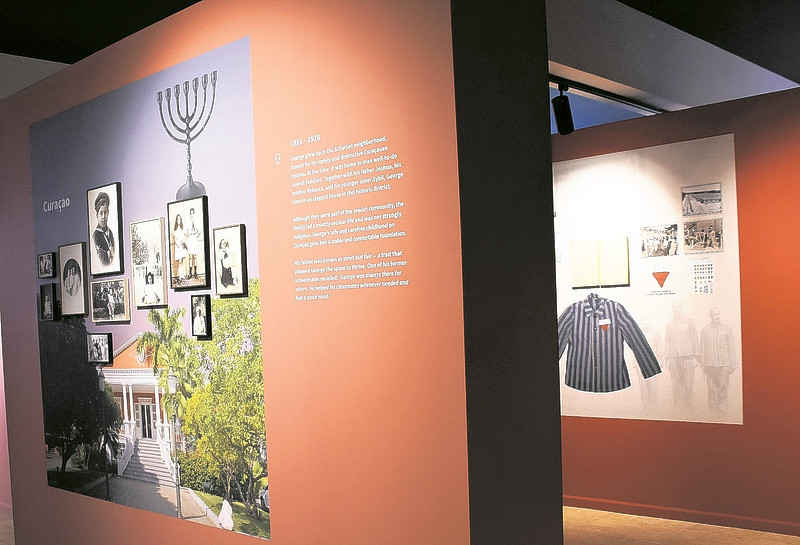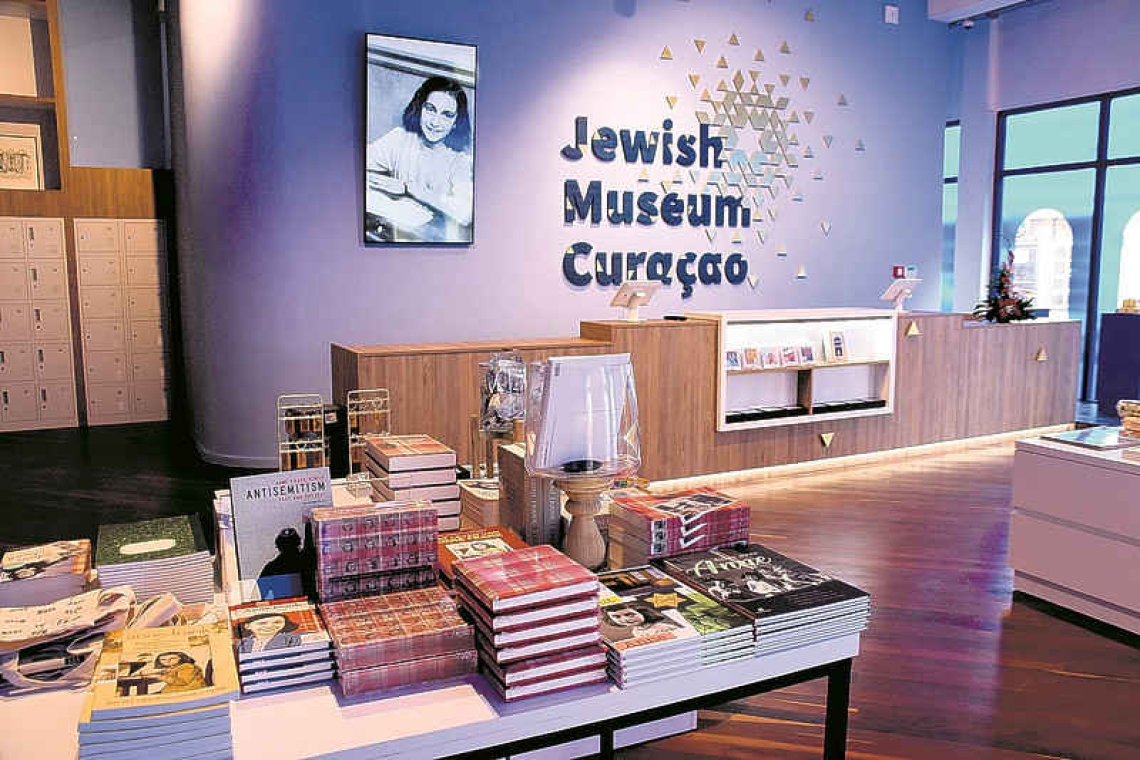Anne Frank exhibition
WILLEMSTAD--“On Curaçao, Jewish history lives in the streets, in the language and in the people. George Maduro is part of this legacy. Anne Frank’s life story is now also part of the island, in the renovated Jewish Museum Curaçao.”
Ronald Leopold, general director of the Anne Frank Foundation, said this last week in the pre-announcement for the official opening of the new wing of the Jewish Museum at the “Hanchi Snoa” synagogue in Punda. He was also there on Sunday together with official guests.

Part of the facility.
Leopold hopes that the voices of Frank and Maduro, two young lives full of promise, broken by hatred and war, will continue to resound. “We hope that their life story and their voice will give young people courage and inspiration to make the world a little better and more just.”
The new wing contains modern exhibitions in which the Holocaust is told from a Jewish Caribbean perspective using photos, objects, stories, films and attributes. The personal stories are central to this.
For example, four local young people talk about their experiences with discrimination and exclusion. With their story, they invite peers to think about what happens when you are not accepted by others and about what you can do yourself against prejudice and discrimination.
The exhibition with audio tour and the videos are in four languages: English, Dutch, Papiamentu and Spanish. Schoolchildren in Curaçao receive an educational programme and can visit the Anne Frank exhibition “Longing for Freedom” for free.
In addition to the Curaçao Jewish history within world history, from the arrival of the first Jews in 1634 to the current Jewish community on the island, there is an exhibition
about Maduro, who was born in Curaçao in 1916. He lived in the Netherlands when the Second World War broke out in 1940 and joined the resistance. Maduro died in February 1945 in the Dachau concentration camp, a few months before the liberation.
A monument has been added to the exhibition for the seven Jewish residents of Curaçao who died in Europe as a result of the Holocaust. These are the seven names that are known. That is why there are also 30 white labels on which the names of family members or acquaintances who suffered the same fate can be written.
The museum has also renewed the exhibition about the Ashkenazi community, originating from Eastern Europe, on the island. Furthermore, a Torah from the 14th century can be viewed, which has been given a prominent place.







